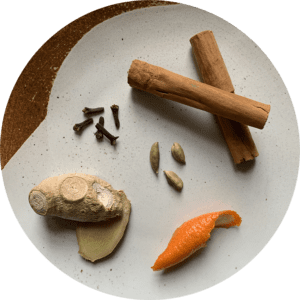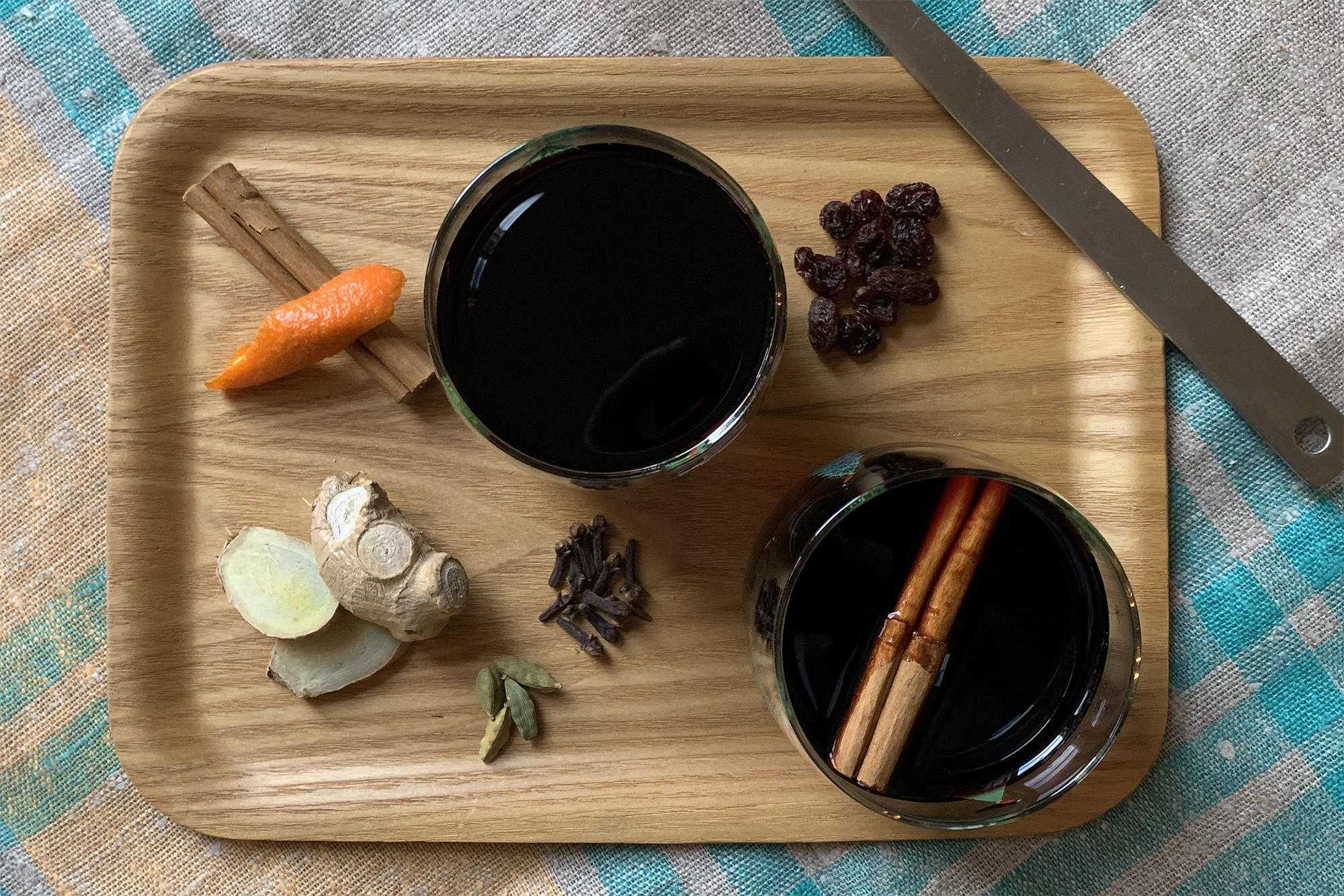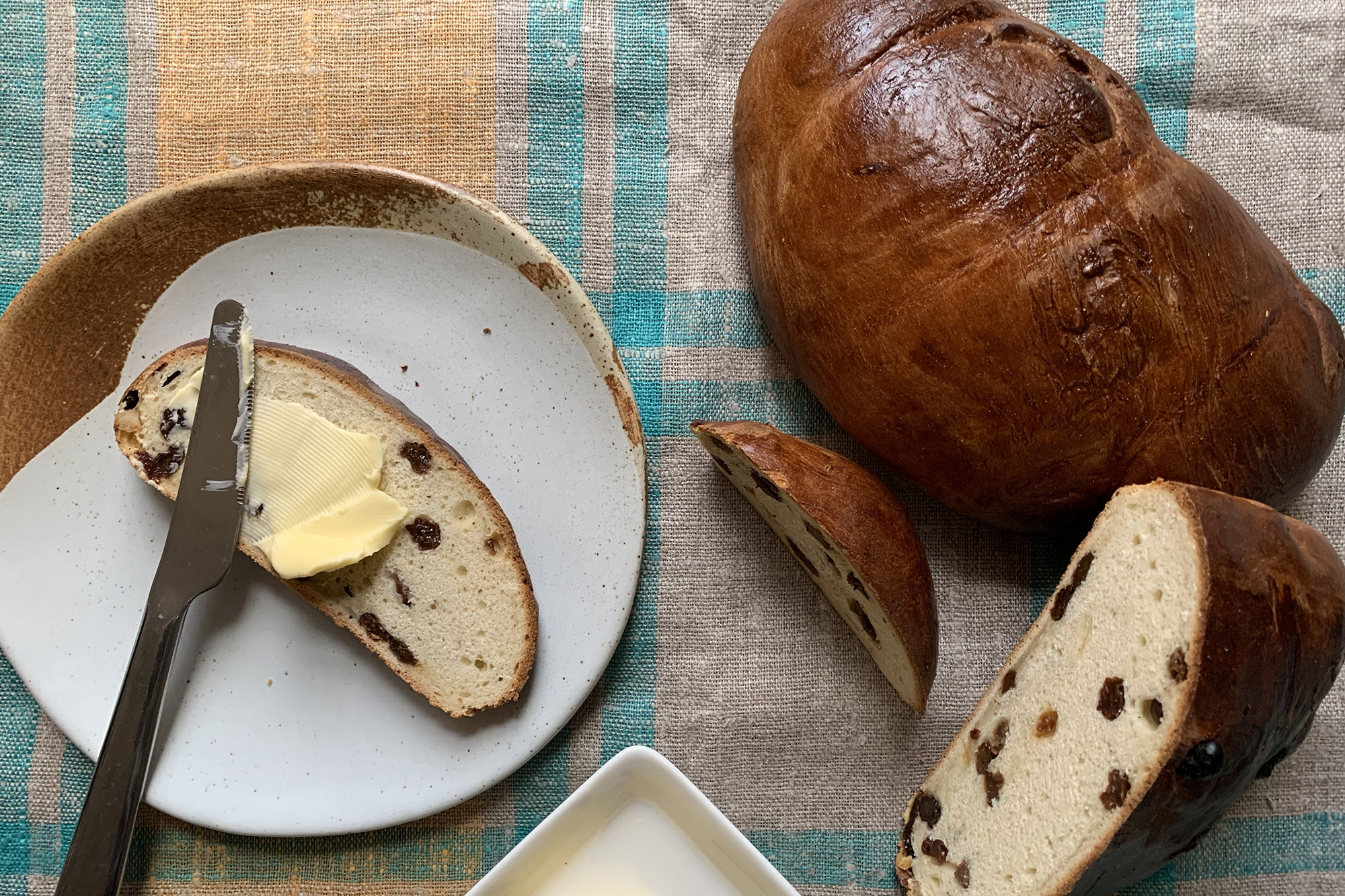There’s perhaps no time of year where the concept of Scandi hygge is more appropriate than at Christmas. The short, dark days and freezing winter weather create the perfect excuse to hang multiple strings of fairy lights, bake sweet cardamom-laden treats that fill your home with the scent of the season and relax with a glass of sweet, heady mulled wine.
Known as glögg in Scandinavia and Iceland, and glögi in Finland, the drink originated as a spiced red wine or blackcurrant juice infusion and was used to fortify messengers and postal workers riding on horseback through the snow. These days, ready-made glögg mixes can be purchased in the Nordic countries, but these are usually based on grape or orange juice and can be overly sweet. Here, we’ll show you how to make the genuine article.
 To go with glögg, one of our resident Norwegians, William Hagerup, has shared his excellent recipe for Norwegian Christmas bread. This sweet enriched bread is perfect eaten simply with butter, but can also be topped with things as diverse as Nutella or brunost – Norwegian brown cheese that has its own subtle caramel flavour. What’s more, the recipe can be easily adapted for vegans.
To go with glögg, one of our resident Norwegians, William Hagerup, has shared his excellent recipe for Norwegian Christmas bread. This sweet enriched bread is perfect eaten simply with butter, but can also be topped with things as diverse as Nutella or brunost – Norwegian brown cheese that has its own subtle caramel flavour. What’s more, the recipe can be easily adapted for vegans.
Read on to get the recipes for these two Christmas classics!
Glögg: the ultimate mulled wine
The spices
 There’ll be no prizes for guessing the classic festive spices used to infuse glögg with its unmistakable warming flavour. The stars are cloves, cinnamon and ginger – all left whole to make them easier to remove before serving. A must for me is cardamom pods: these add that classic Scandi flavour and make it that bit more special than mulled wine elsewhere. To facilitate easy removal, you might want to put your spices into a bouquet garni bag. Cotton ones are available online, which can be rinsed and used again and again.
There’ll be no prizes for guessing the classic festive spices used to infuse glögg with its unmistakable warming flavour. The stars are cloves, cinnamon and ginger – all left whole to make them easier to remove before serving. A must for me is cardamom pods: these add that classic Scandi flavour and make it that bit more special than mulled wine elsewhere. To facilitate easy removal, you might want to put your spices into a bouquet garni bag. Cotton ones are available online, which can be rinsed and used again and again.
If you can get it, dried orange peel will add a lot of flavour too. This is actually fairly easy to make yourself. Wash and peel an orange, tearing the peel into large pieces as you go. Lay on a baking sheet and bake in a low oven 120°C (100°C fan) for around half an hour. This will release the natural oils and aromas for a more complex flavour. You can keep any leftover peel for future rounds of mulled wine over the Christmas period.
The wine
There’s no need to splash out on an expensive bottle of plonk here – in fact glögg is a fantastic way of improving the quaffability of cheaper wines. Young, sweet, fruity reds work best, although if you’ve got a bottle of dry red gathering dust it can be put to good use. Dry wines will need a bit more sugar, so adjust the amount to your taste as you go.
The accompaniments
In Scandinavia, glögg is frequently served with raisins and flaked almonds. Add these to your glass just before filling – the raisins will soak up the glögg as you drink it and give you something juicy to munch on at the end.
As for what to pair with glögg, something sweet always works well. We suggest William’s Norwegian Christmas bread (recipe below) or if you’re not a baker, you could opt for a ginger snaps, which are readily available from IKEA!
Max’s glögg recipe

Vegan
Makes 4 glasses
Ingredients
1 bottle red wine, preferably on the sweeter side
1 cinnamon stick
2–3 cloves
2 coin-sized slices fresh ginger root
2 cardamom pods
Orange peel (dried if available)
3–4 tbsp sugar
To garnish:
4 cinnamon sticks
4 tsp raisins
2 tsp flaked almonds
Method
- Empty the entire bottle of wine into a saucepan and place on a medium-low heat.
- Using a mortar and pestle, or underneath a knife blade, lightly crush the cardamom pods to expose the seeds inside. If using a bouquet garni bag, add the cloves, ginger and cardamom pods and place the bag in the saucepan (if not, add the spices directly to the wine). Then add a cinnamon stick and the orange peel.
- Add the sugar and stir well. Cover with a lid until the wine starts to warm. Do not let the wine come to the boil.
- After a few minutes, the sugar should have dissolved. Stir once more and taste, adding more sugar if it doesn’t seem sweet enough. Don’t let too much of the wine evaporate – that’s the alcohol escaping! It’s only necessary to bring the wine up to a pleasant drinking temperature. If the wine seems warm enough but the flavour is not well developed, take off the heat, cover and leave for a few more minutes to infuse.
- Divide the raisins and flaked almonds evenly between 4 serving glasses. Use thick-walled glasses rather than wine glasses, as the heat may cause thinner glasses to crack.
- Remove the bouquet garni bag and other spices from the wine (if not using a bag, you might wish to strain the wine to catch any bits). Ladle the wine into each glass. Garnish with the remaining cinnamon sticks and serve!
William’s Norwegian Christmas bread
 Makes 2 loaves
Makes 2 loaves
Vegetarian, or vegan if butter is substituted
Ingredients
750g strong white flour (plus extra for dusting)
85–125g sugar (amount to taste)
1/2 litre lukewarm (approx. 37°C) water
100g dairy butter, melted (use a neutral oil if you wish to avoid dairy)
1 sachet dried yeast (use the one for sweet bake if you can find it, if not, I find that you can use 2 ordinary sachets or just give the dough a bit more time, if needed)
1 tsp salt
1–3 tsp ground cardamom, plus a handful of seeds, crushed (depending on how cardamommy you like it)
100g raisins/dry fruit mix (optional)
1 egg, beaten (optional)
Method
- Mix a small quantity (3 or 4 handfuls) of the flour with the yeast first (do not allow yeast to come into direct contact with the salt or sugar). Mix well.
- Then mix in the sugar, salt and, if using, ground cardamom and crushed cardamom seeds.
- Slowly add the water, mixing with a wooden spoon. Then add the melted butter (or oil if using).
- Gradually add the flour and mix with a wooden spoon. The mixture will be liquid and lumpy at first, but as you add more flour it will start to come together.
- Turn the mixture out onto your workbench. Knead for around 5–10 minutes, adding flour until the dough is no longer sticky, but still soft. If you squeeze the dough it should not stick to your fingers but feel slightly moist.
- Place the dough in a bowl and cover. Let it prove in a warm place for 50 mins to an hour.
- Turn the dough out onto the workbench again. Divide into two equal parts. If you want to include raisins/dry fruit, mix this in now. (I usually make one with and one without).
- Shape the loaves as desired. Place on a baking tray lined with baking parchment. Cover and leave in a warm place to second prove for at least 45 mins, possibly 1 hour – keep an eye on it.
- Pre-heat the oven to 225°C (I use a fan oven). If you want a glossy finish, beat an egg and brush it lightly and carefully over the loaves before you put them in the oven.
- Bake for approx. 25 minutes. Check that they are done by tapping the middle of the bottom of the loaf with the tip of your finger. If the sound is wooden and hollow, they are done. If you get a dense, solid sound, they’re not ready. Reduce the heat to 220°C and put them back for another 4–5 minutes, checking as needed, until ready. If you prefer a crustier crust, you can turn up the temperature to 230°C during the last 5 minutes of baking.
- Once satisfied they are indeed done, leave to cool slightly on a wire rack. When still fairly warm, cut into chunky slices and enjoy. (I like to slather them with real dairy butter and let it melt a bit – my daughter likes them with Nutella: anything goes!). For a truly Scandinavian experience: get hold of some Norwegian brown cheese (brunost), and cut thick slices of it to have on.




